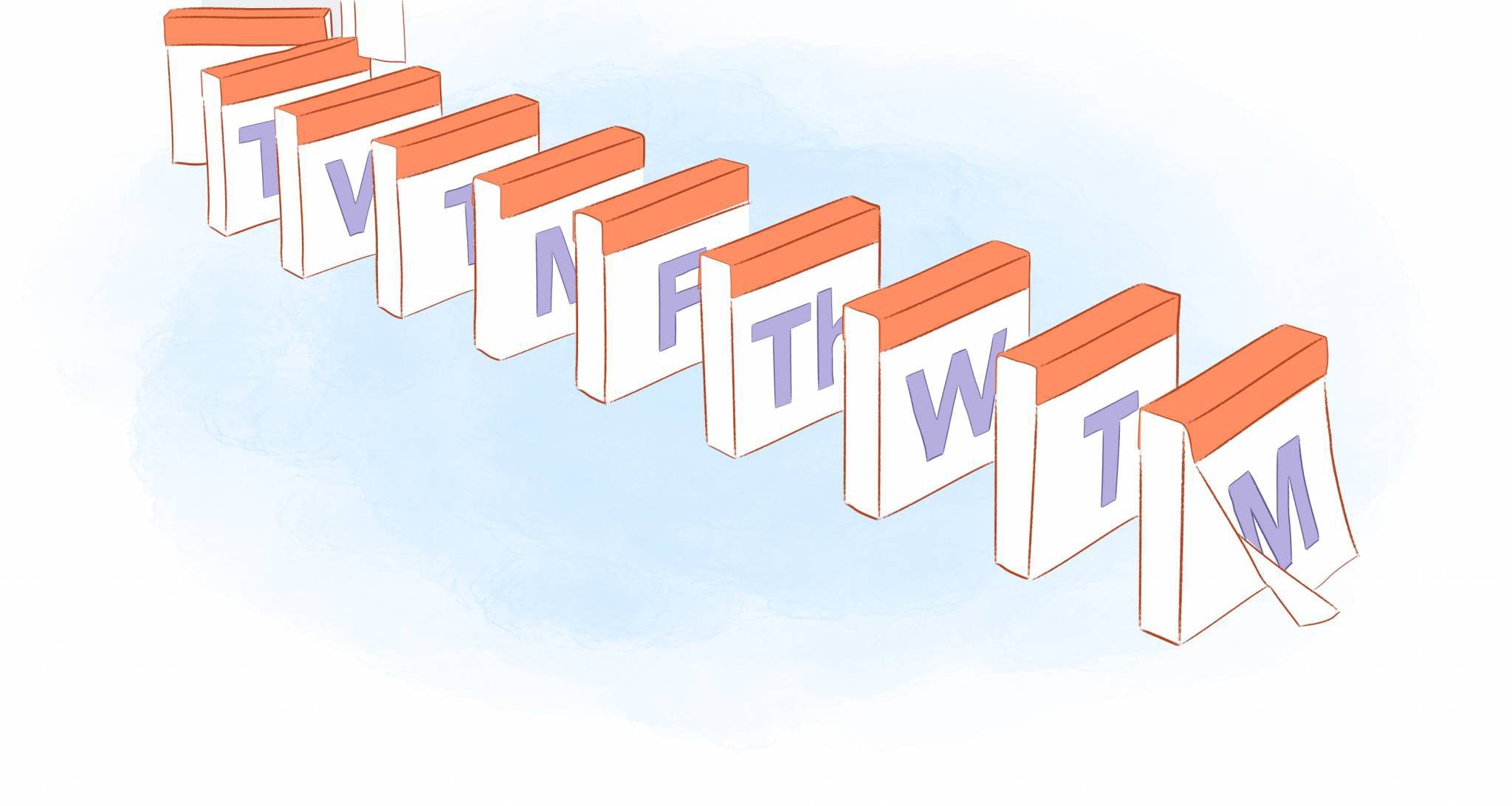

Being successful in business generally requires you and your team to remain productive and use time, money, and talent efficiently. And it is especially important as we adjust to new ways of living and working. To recognize, motivate, measure, and improve productivity, leadership often plays a critical role. As a leader, you can develop professional capabilities by learning about management for productivity.
Throughout this article, we will explore what management for productivity is, why it’s important, and how management affects productivity.
Productivity Management 101
Individuals, teams, and organizations use productivity management to improve their efficiency and effectiveness. There are many activities involved in it, including:
- Setting clear and achievable goals. In order to be productive, employees must know what they are striving for. By setting clear goals and expectations and providing regular feedback, managers can help.
- Identifying and removing bottlenecks. Poor communication, inefficient processes, and outdated technology can all hinder productivity. A smoother workflow can be achieved by identifying and removing these bottlenecks by managers.
- Providing the right resources. Tools and resources are essential for employees to be productive. Technology, training, and support should be available to employees at all levels of management.
- Creating a positive work environment. When employees work in a positive and supportive environment, they are more likely to be productive. Managers can create this environment by fostering collaboration, celebrating successes, and providing growth and development opportunities.
An example of productivity management is as follows:
A manager notices that one of her team members has trouble meeting deadlines. In order to identify the root cause of the problem, she meets with the team member. Their investigation discovered that the team member spent too much time on administrative work.
By delegating some administrative tasks to other team members, the manager helps streamline the team member’s workflow. This allows team members to focus on their core responsibilities and meet deadlines more efficiently.
Overall, the process of managing productivity is ongoing, and no single solution works for all companies. A successful approach depends on the specific needs of the individual, team, or organization.
The Importance of Productivity Management
Productivity management is vital for several reasons. Firstly, it can assist organizations in achieving their goals faster and more efficiently. In addition to producing more goods and services with the same resources, organizations can create the same amount with fewer resources by improving productivity. As a result, profits can rise, and competition can improve.
Secondly, productivity management can improve work quality. Organizations can reduce waste and bottlenecks by focusing on efficiency and effectiveness. In turn, this can lead to increased employee morale and customer satisfaction.
Thirdly, productivity management can lead to cost reductions. In order to reduce time and resources spent on tasks, organizations can improve efficiency and effectiveness. Profitability and lower costs can be achieved as a result.
Lastly, employee satisfaction can be increased through productivity management. When employees feel that their work is making a difference and that they are productive, they are more likely to be satisfied at work. Planning, organizing, and tracking employees’ progress can be accomplished through good productivity management. The result can be an increased sense of satisfaction and accomplishment at work.
The benefits of effective productivity management
Effective productivity management can lead to a number of benefits, including:
- Increased output. Organizations can produce more goods and services with the same resources or produce the same amount of goods and services with fewer resources.
- Improved quality. Organizations can focus on efficiency and effectiveness to identify and eliminate bottlenecks and waste.
- Reduced costs. Organizations can reduce the amount of time and resources spent on tasks.
- Increased employee satisfaction. Employees are more likely to be satisfied with their jobs if they feel that they are productive and that their work is making a difference.
Management’s Contribution to Productivity
According to a Gallup study, 70% of the variance in employee engagement can be attributed to management. In order to get the most out of each member of a team, a manager must recognize their skill levels, strengths, and challenges.
To me, that makes sense. A strong manager is more likely to increase employee engagement and productivity levels overall.
The best managers recognize and utilize their employees’ unique skill sets and strengths by assigning the right tasks and responsibilities. Managers often influence productivity in the following ways:
- Providing coaching and training opportunities to employees.
- Taking the time to recognize employee contributions.
- Rewarding your team as well as the individual.
- Enhancing a team’s skill set and the skills of its members.
The following are specific ways management can improve productivity:
Setting objectives.
The traditional measure of a good objective is to make sure it is specific, measurable, achievable, relevant, and time-bound. It is easy for an employee to feel confident about working toward and achieving an objective if it checks all these boxes.
Delegating responsibilities.
In order for a team to succeed, trust is essential. Shared responsibilities create more time for managers to focus on strategic tasks, empower their reports, and give them development opportunities.
Effective communication.
For teams to be effective, they must be closely connected and capable of collaborating. Team members, managers, and their reports need to stay in touch — especially if you have a remote or distributed team.
Reporting feedback to employees.
Managers are like mirrors for employees, reflecting on their progress and pointing them toward their next goals. Managers should provide specific, actionable feedback regularly for team members to continue improving.
How to Improve Productivity Through Management
When it comes to managing productivity, no single solution works for everyone. It depends on the needs of the individual, team, or organization. To maintain productivity at work and with your team, follow these tips:
- Set clear expectations and goals. Make sure your team members know their responsibilities and goals. As a result, they will be able to focus their energy and efforts on the most important tasks.
- Provide regular feedback. Share feedback with your team members and tell them what they can improve. As a result, they will stay motivated and on track.
- Delegate effectively. You don’t have to do everything yourself. Your team members should be assigned tasks based on their experience and skills. You can then focus on what matters most to you.
- Establish a positive working environment. Respect and value your team members. Teamwork and collaboration should be encouraged as well. You should also provide learning opportunities for your team members.
- Empower your employees. Make your employees responsible for their work and allow them to make their own decisions. The result will be a more engaged and motivated workforce.
- Schedule regular meetings or group meetings. Aligning goals and objectives can be achieved through group meetings held in person, via video conference, or by phone. Also, it may be helpful to gather the team in advance in order to discuss any issues or challenges.
- Use productivity tools and resources. You can improve your productivity by using a variety of tools and resources. Using project management tools, for instance, will let you know how your team is doing and what deadlines are approaching.
- Reward and recognize good work. Be sure to recognize and reward your team members when they achieve their goals. In this way, they will be motivated and productive.
Conclusion
Organizations can benefit from productivity management by achieving their goals, improving the quality of work, reducing costs, and increasing employee satisfaction.
Organizations can set clear and measurable goals to improve productivity management, plan and organize work effectively, track progress and adjust as necessary, provide employees with the resources and support they need, and cultivate a positive work environment.
FAQs
What is productivity management?
Productivity management aims to help individuals and teams achieve their goals by effectively using their time and resources. Setting goals, prioritizing tasks, avoiding distractions, and keeping track of progress are all part of the process.
Why is productivity management critical?
Managing productivity is essential for individuals as well as for organizations. In addition, it can assist individuals in achieving their goals more quickly and efficiently, reducing stress and balancing work and home. As a result, organizations can increase output, improve profits, and improve their competitiveness.
What are some standard productivity management tools and techniques?
Productivity management tools and techniques are available in a variety of forms. Among the most popular examples are:
- To-do list apps
- Time tracking software
- Project management software
- The Pomodoro Technique
- The Eisenhower Matrix
How can I measure productivity?
To measure productivity, there are several different methods available. These are some of the most common metrics:
- Output per hour
- Number of tasks completed
- Cycle time
- Error rate
- Customer satisfaction
How can I stay motivated and productive?
When working on a lengthy or difficult task, staying motivated and productive is important. The following tips will help:
- Take breaks. Do something you enjoy, such as moving around. You will feel refreshed and focused when you return to your work.
- Reward yourself. Give yourself a small reward after completing a task. Maintaining motivation and staying on track will help you achieve your goals.
- Set realistic goals. Be careful not to overwhelm yourself. Reduce the size of large tasks and make them manageable.
- Find an accountability partner. A support system can also be helpful when you have someone to check in with and talk to.
Image Credit: Jonathan Borba; Pexels; Thank you!











John Rampton
John’s goal in life is to make people’s lives much more productive. Upping productivity allows us to spend more time doing the things we enjoy most. John was recently recognized by Entrepreneur Magazine as being one of the top marketers in the World. John is co-founder and CEO of Calendar.